CW89 April, 2024
About 40% of the nation’s municipalities could disappear in the future. Can Chigasaki continue to exist?
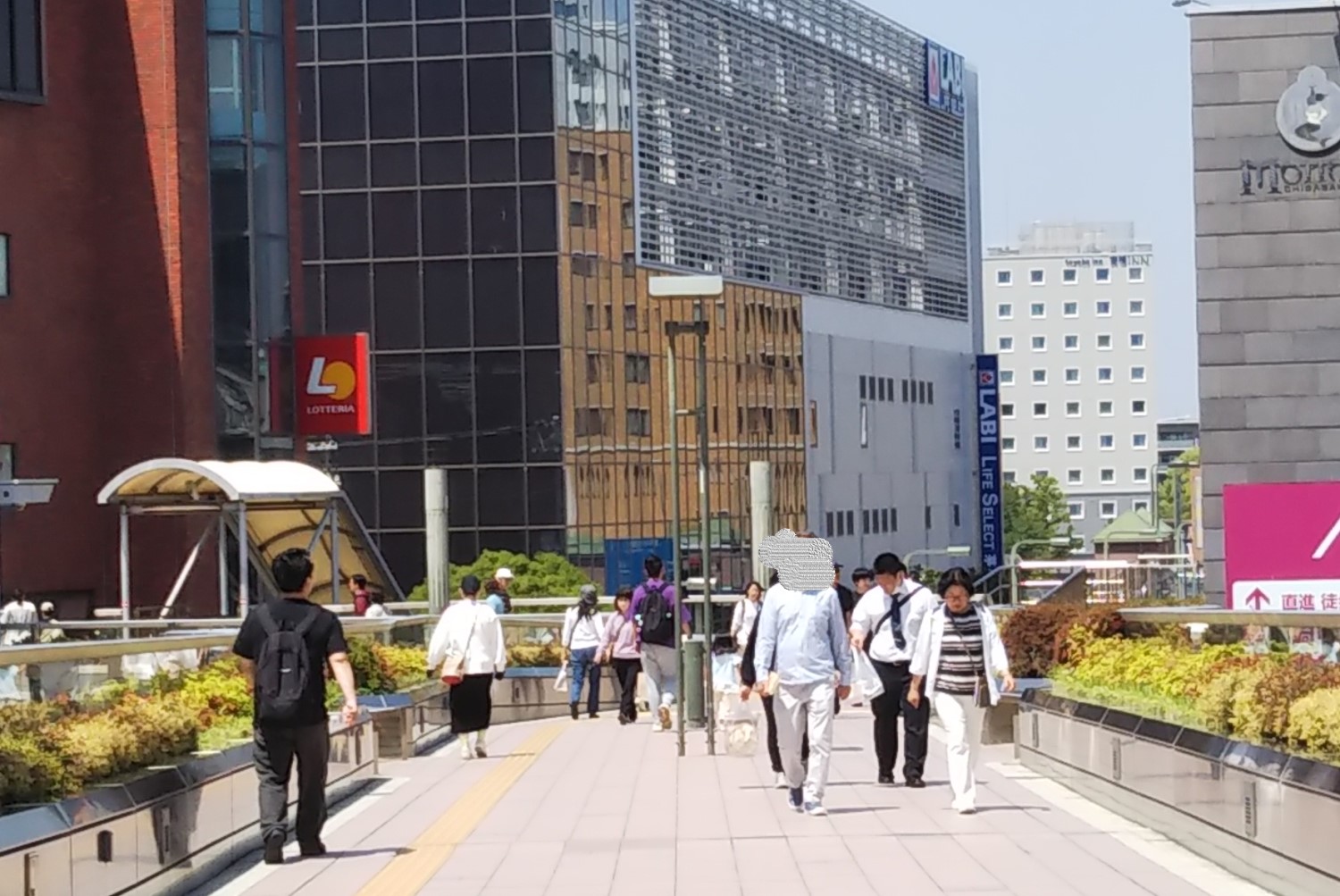
The Population Strategic Committee released its forecast of future populations of the nation’s 1,729 municipalities on April 24 (Wed). The committee says 744 municipalities are at risk of disappearing after 2050 due to sharp declines in the populations of women ages 20 to 39.
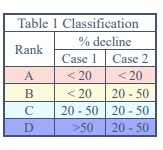
The committee postulated that the young women population of a municipality determines its total population in the future, and calculated population decreases for each municipality based on two methods for estimating the number of young women (20-39): (method 1) using projected differences in the numbers of people coming in and out of the municipality (social decrease); and (method 2) using projected differences in the numbers of births and deaths (natural decrease).
For the classification of each city, see the table 1. Data on Chigasaki and other municipalities nearby are shown in the table 2.

There is no risk of Hayama’s municipality disappearing in the future. Chigasaki’s, Kamakura’s and Fujisawa’s will also continue to exist, but these cities have to reduce natural decreases by raising birth rates and the number of marriages. Hiratsuka has to mitigate both decreases, too. Miura is at risk of disappearing after 2050. The city has to reduce especially its social decrease. The expected total population of Chigasaki in 2050 will be 197,000 ~ 228,000, compared to 242,389 in 2020.
For the complete database, go to 01_report-1.pdf (hit-north.or.jp)
Be cautious about bank transfer fraud
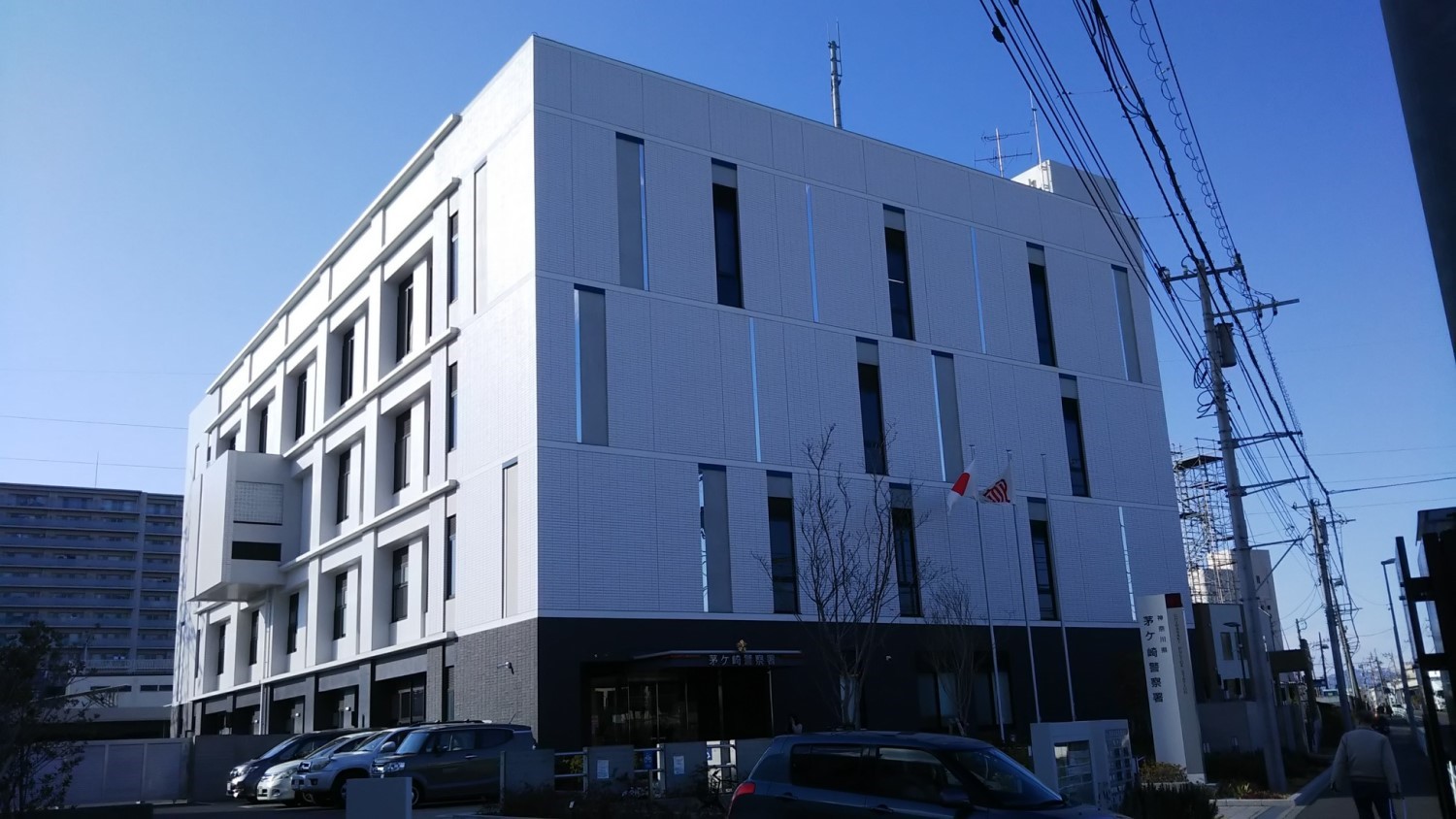
More citizens have been involved in bank transfer fraud in Chigasaki than other cities with similar populations in Kanagawa. The figure below shows the number of cases and amount of damage happened in Chigasaki in the past six years. In the first two months this year, three cases were reported.
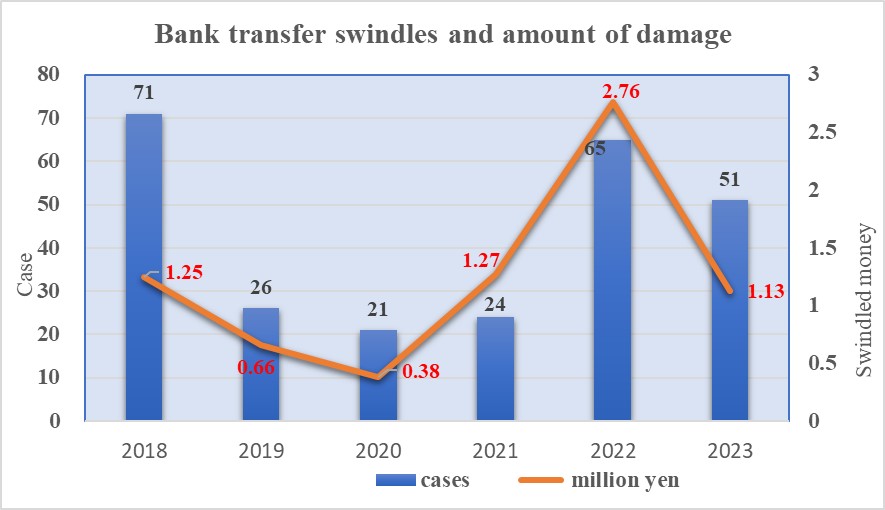
Victims are mostly people ages between 50 and 80, and especially women in this age bracket. Up to a few million yen was swindled in one case. It is quite a mean crime, inflicting large amounts of damage on weak people.
As the crime begins with a phone call, the police advise people to use an answering machine, and to keep its voicemail function active. A telephone with an annoying call preventing system is better. The police also say when the caller brings up money, you should hang up immediately. And you should never think that you will be all right. They are professional swindlers and are improving their art of conversation every day, because their lives entirely depend on their ability to deceive the other person on the phone.
The data are from https://www.police.pref.kanagawa.jp/ps/chigasaki/toukei_jiken.html
Flowers of the Season: Kousa Dogwood
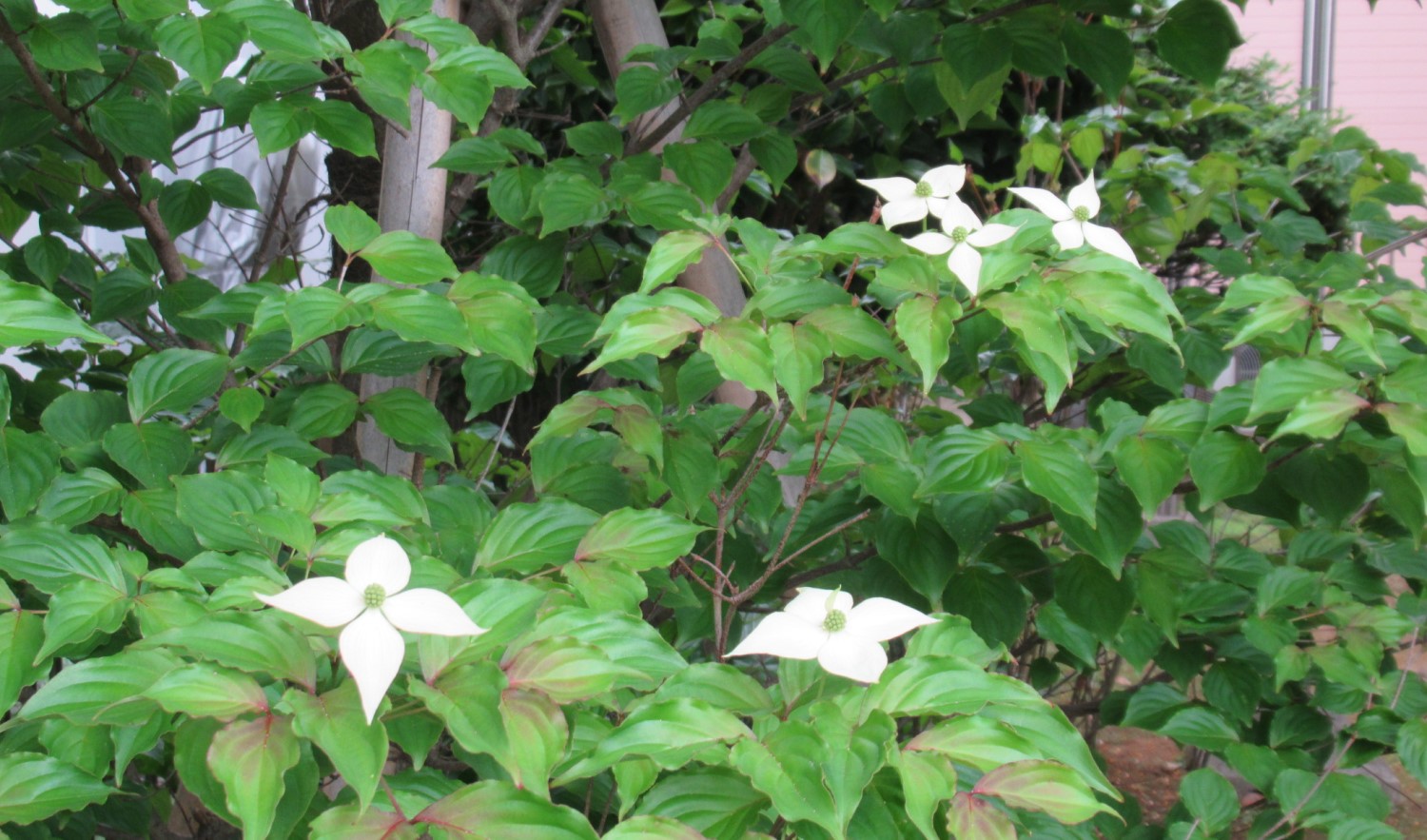
There are many kousa dogwood trees in Hakone. The trees covered with white involucrate blossoms are outstanding in the fresh green mountain range from May to July. As local people called the plant kusa, ‘kousa’ was adopted as its specific name. The Japanese name Yamaboushi was derived from the appearance of blossoms, and the habitat of the tree. White involucres resemble armed priests’ cowls (houshi), and the plant was often found in the mountain forests (yama).
The kousa dogwood, originating in China, grows naturally from Tohoku (northern Japan) to the Ryukyu islands (the southernmost part of Japan) as well as in the Korean Peninsula and China. The tree resists cold so it is planted even in parks and gardens of Sapporo, Hokkaido.
As the deciduous broadleaf tree hates the afternoon sun, it is usually planted in the eastern and southern parts of premises. The plant used to grow wild along mountain valleys and prefers moist, well-drained soil. Its leaves are opposite phyllotaxis, oval-shaped, and acuminate. Their upper surfaces are tinged in dark green, and the undersides in white. The two surfaces are covered with pubescence.
In early summer, a large number of ornamental flowers come out at the end of branches of the medium-height tree after all the leaves have completely opened. In the center of four white involucres, 20 to 40 small discreet flowers in pale lime-green thicken. These flowers bear three-centimeter spherical sweet red aggregate fruits in September and October. These edible fruits are used for producing fruit liquor. In autumn, the leaves turn red, yellow, orange, or purplish brown depending on how much sunlight they get.
By the way, flowering dogwood is the same species as kousa dogwood but the former blooms before its leaves open. In addition, its fruit is not edible because it contains a poison.
History of Chigasaki: Tsutsumi Village (1)
As well as Namegaya and Serizawa Villages, Tsutsumi Village was located on Koza Hill. The surrounding area of the village, except for the west, is higher than its central part. A valley spreads from the village center towards the west, and the Komayose River runs along the valley. In the old days, residents built their houses around the valley, but recently many houses have been built on reclaimed paddy fields and plateaus. 新編相模国風土記稿 (the new edition of Sagami province topography) records that Tsutsumi Village is about 14里 (14 ri, 56 km) away from Edo, the estate steward is the Oka Family, and the village shrine is Suwa Shrine. The topography also describes the names of several temples, including Syokakuin Temple of the Soto sect, Jyokenji Temple of the Jyodo sect, and Myodenji Temple of the Nichiren sect.
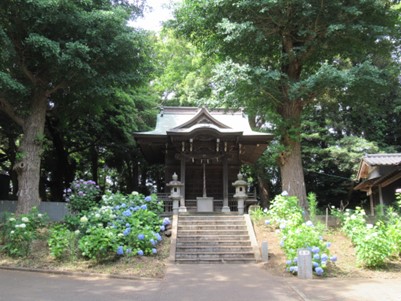
Suwa Shrine is called Takehiko (建彦) Shrine today. See the right photo. In 1910, Kanayama Shrine in Namegaya Village and Suwa Shrine in Shimoterao Village were enshrined at the Suwa Shrine of Tsutsumi Village by the instruction of the government. According to a folklore, from 建御名方命 (Takeminakata no mikoto), the god of Suwa Shrine, and 金山彦命 (Kanayamahiko no mikoto), the god of Kanayama Shrine, 建 and 彦 were used for the name of the new shrine.
In the precincts of Takehiko Shrine stands a monument on which “西征陣亡軍人之碑 (Seiseijin-bougunjin no hi),” is carved. 西征 (seisei) means the Satsuma rebellion. Conservative samurai had Takamori Saigo installed as leader, and in 1877, Saigo raised a revolt in Kagoshima against the Meiji government. His army attacked the Kumamoto Army District, and the government dispatched its army immediately.
The government army was formed based on the 1873 conscription law. On the monument in the precincts of the shrine, it is written that Matsugoro Komiya, who had been conscripted and sent to Kyushu, was killed in the battle at Tamana gun in Higo, today’s Tamana city in Kumamoto prefecture, on March 20, 1877. The monument was built by Tsutsumi Village three years after his death.
Interested in Japanese proverbs?
1) 吝ん坊の柿の種 (SHIWAN-BO NO KAKI NO TANE)
SHIWAN-BO means a miser, NO of, KAKI persimmons, NO of, and TANE a seed.
A stingy person cannot help holding everything so that he or she saves even such a useless persimmon seed. We often see this type of person. It is not bad to treasure things. Parents tell their children not to waste things. However, their behavior may be just excessive. An old Roman proverb tells us, “Virtue takes the middle course.”
A popular BS Asahi TV program aired on Tuesday night at 21:00 may provide another thought for these people. Following decluttering instructor Yamashita-san’s advice, a family living in a house full of trash begin to dispose of things, which are important for them but just pieces of junk for others, and tidy each room. They find clean and spacious rooms very comfortable.
The proverb is in 世間長者容気, Seken chojya katagi, a kind of Ukiyo zoshi, novels depicting the lives of ordinary men and women. Stories in the category were written in the Osaka area from 1680 to 1770.
Its English equivalents are:
● He will not part with the parings of his nails.
● His money comes from him like drops of blood.
● To get money from him is like pulling teeth.
2) 玉磨かざれば光なし (TAMA MIGAKAZAREBA HIKARI NASHI)
TAMA means jewels, MIGAKAZAREBA unless it is polished, HIKARI the glitter, and NASHI not to glitter.
Even a jewel does not sparkle unless polished. Likewise, no matter how great a man’s capacity is, he cannot realize his ambition unless he polishes his ability. Various kinds of specialists, including doctors, engineers, writers, athletes, artists, actors, designers, cooks and many more, always train or improve their muscle, brains, sensibility and palate. Some skilled laborers have to be good with their hands.
In another three months, the Paris Olympics will begin. Wonderful performances by the best athletes will tell us that the proverb is worth taking to our hearts.
The saying is in 可笑記, Kashoki, a Kana zoshi published in 1642. Kana zoshi were educational stories written in hiragana, or Japanese-originated vocabulary, and published in the Kyoto area.
Its English equivalents are:
●A diamond in the rough.
●An uneducated mind is uncut marble.
●Nurture is above nature.
Invitation to Kamakura (37) - Spring Flowers in Kamakura (Bimonthly serial)
Winter-like weather was continuing at the beginning of March. Several days in February were hot enough to be like early summer, though. This makes me feel uneasy – the four distinct seasons in Japan have become blurred and may be lost. However, the season of spring flowers is coming up anyway. Let’s look around Kamakura to enjoy seeing floral buds opening brilliantly.
Magnolias bloom in March in Kamakura. The flowers open before the leaves appear, and range in color from pink, purple, white and even yellow. We can see them in Engakuji, Tokeiji, Hokaiji, and Hasedera temples. Magnolias are believed to be the most primitive flowering plants with their fossils dating back over 100 million years, which were excavated in Europe, North America and Asia, but since the last ice age, their native range has been Asia and eastern America. Magnolia trees even existed before bees, so they rely on beetles for pollination. Instead of nectar, the flowers produce large quantities of pollen that the beetles use for food.
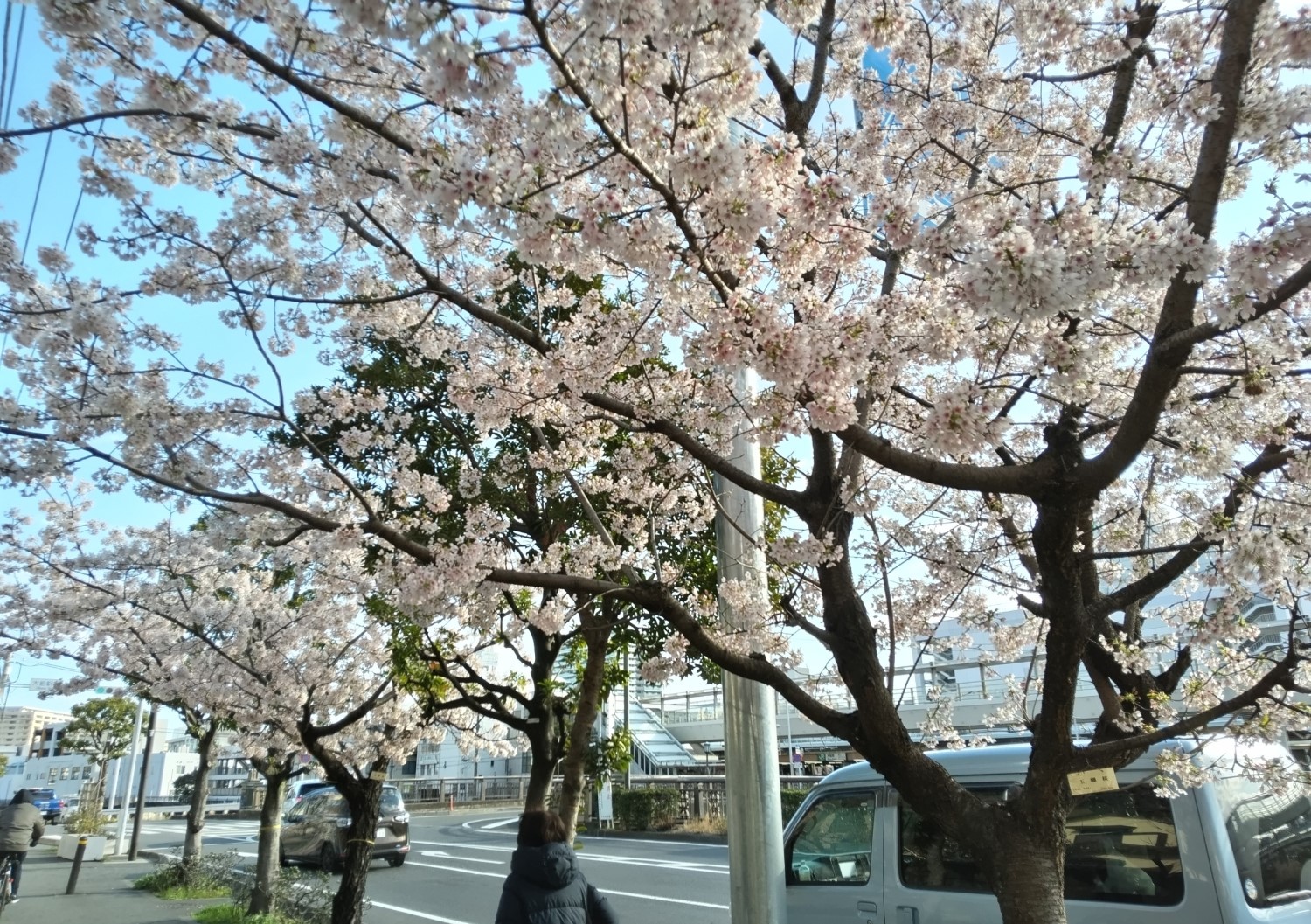
Japan’s spring comes along with cherry blossom blooming. Cerasus campanulate, or more commonly Taiwan cherry, Formosan cherry and bellflower cherry, is one of the early cherry blossoms in the spring season. The species which is originally from Taiwan, China and Vietnam was introduced not only in Japan, but also Australia, New Zealand, England, the US mainland and Hawaii. In Kamakura, we can enjoy the Taiwan cherry blossoms in Tsurugaoka Hachimangu shrine and Hasedera temple. The bell-shaped flowers are red or dark pink. The leaves with serrated edges are bright green in spring, and then turn dark green by summer. Another early cherry blossom is Tamanawa cherry blossom. This variety was obtained through crossing two kinds of cherry trees, Yoshino cherry and Oh-kanzakura cherry, in the Ofuna Flower Center in 1969.
According to the 2024 cherry blossom forecast by Weather News, they will bloom on March 24th in Tokyo, March 25th in Yokohama, and March 26th in Kamakura. In Kamakura, they will be in full bloom on April 1st, so we can enjoy cherry blossom viewing from the end of February to the beginning of April.
Short Essays on Chigasaki-11 Danjuro and His Second House, ‘Kosho-an’(孤松庵)(Modern times)

Kabuki actor Ichikawa Danjuro Ⅸ purchased around 2ha of land for his second house near Kowada Hamasuka in Shorin village, Heiwa-cho today, in 1896. He was a pioneer who built a second house in the village. He named it ‘Kosho-an (lonely pine tree house)’, because a tall pine tree had stood on the premises. The photo is the monument on the Kosho-an site
The reason he built his second house in Chigasaki was he loved fishing, and thought how fun it would be if he can enjoy fishing in the Bay of Sagami while admiring the scenery of Mt. Fuji. Chigasaki was exactly such a place. The house had a training room for Kabuki dancing for his disciples. The Onoe Kikugoro practiced there under the instruction of Danjuro.
At the Kabuki-za in May 1903, he gave his last performance. He had stayed at Kosho-an since July 1903, but he got sick on September 8 and passed away on September 13. Many people visited the house to make a condolence call, so it was very crowded. However, Kawakami Otojiro* struggled through the crowd, and helped send his body to Tokyo by train for his funeral on September 15. At the ceremony held at Aoyama Funeral Hall in Tokyo, Otojiro read the eulogy on behalf of the then Prime Minister, Ito Hirobumi.
Kosho-an had stood, leaving traces of his later years, until it collapsed during the Great Kanto Earthquake in 1923.
(The source of the essay: Chigasaki People’s Book published by Chigasaki City)
* Kawakami Otojiro, a pioneer who developed the modern theater in Japan, loved and respected Danjuro. So, he built his house near Kosho-an in 1902. When Danjuro passed away in 1903, he contributed to repairing roads in Chigasaki to help mourners to visit Kosho-an.
Events in April
The statue of Yuzo Kayama made its appearance
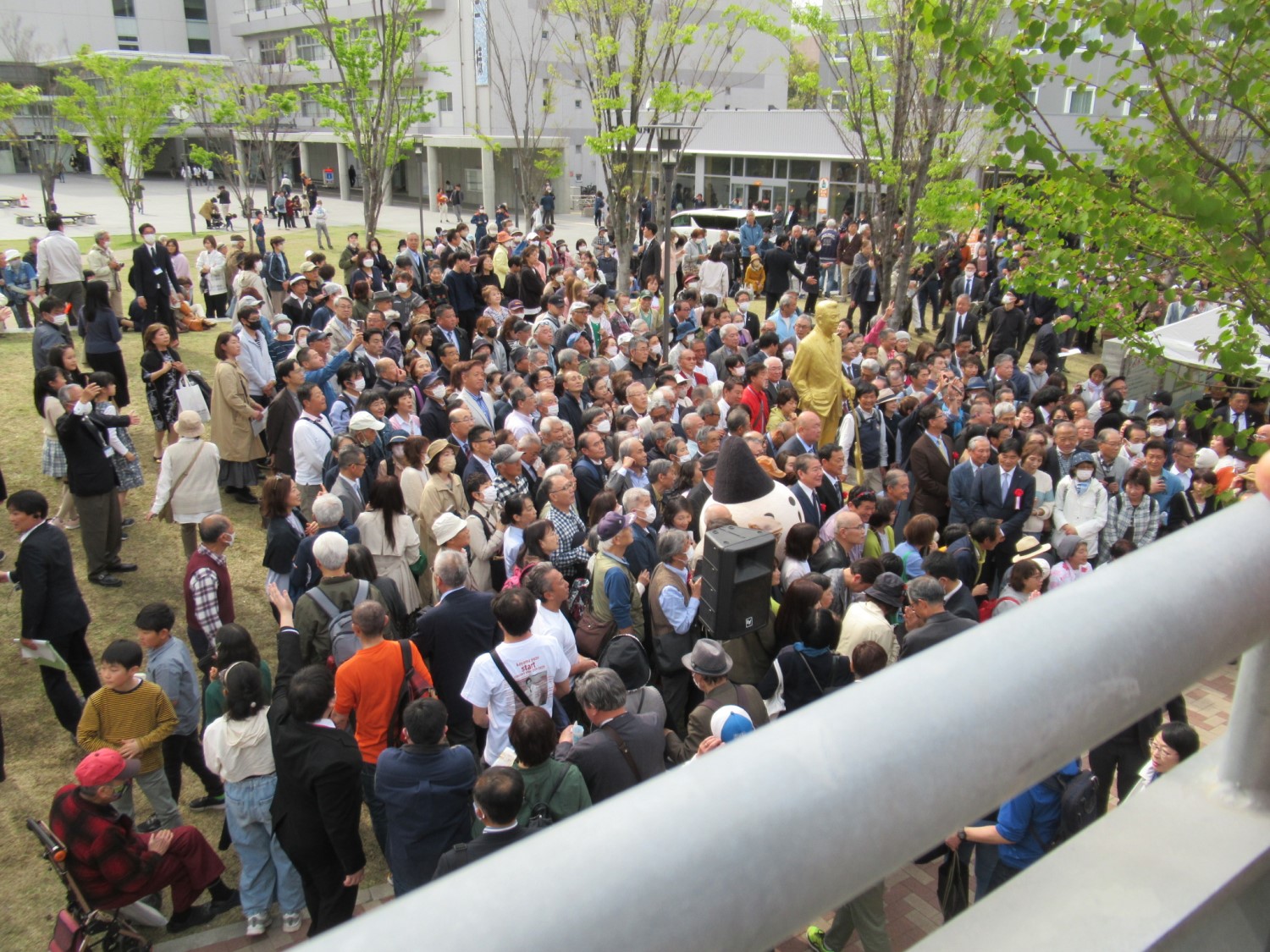
An unveiling ceremony of Yuzo Kayama’s statue took place on the beautiful afternoon of April 11 (Thu), his 87th birthday, in the front yard of City Hall. He lived in Chigasaki for 30 years (one to 31). Many of his songs were hits among the young and middle aged in those days, who are now in their late 60s and older. Chigasaki became famous as the much-loved singer’s home town, which is the reason he was honored.
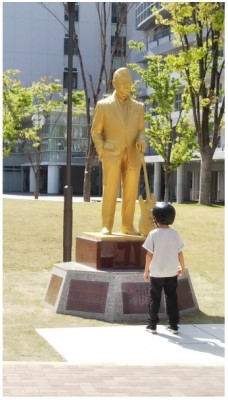
The statue was made by the money collected from his fans. Chigasaki City Chamber of Commerce and Industry had promoted a fund-raising project, and received a contribution of 15 million yen from 500 people across the nation. The life-sized statue with an electric guitar is made of bronze and coated with gold paint.
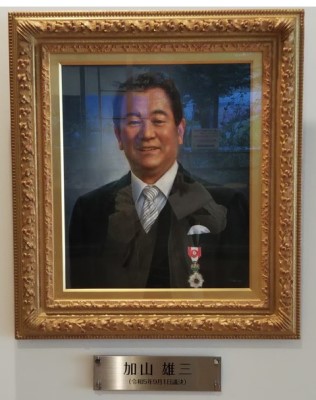
In addition, his portrait was hung next to those of the city’s other honorable citizens on the right wall of the Civic Hall’s 1F entrance hall. Hundreds of contributors and citizens gathered at the front yard. The pedestrian bridge nearby was also filled with spectators. A man shouted to him, “Welcome home, young leader.” He replied with his famous phrase, “Thanks everybody. How happy I am!”
Art exhibition by Shonan watercolor sketch club
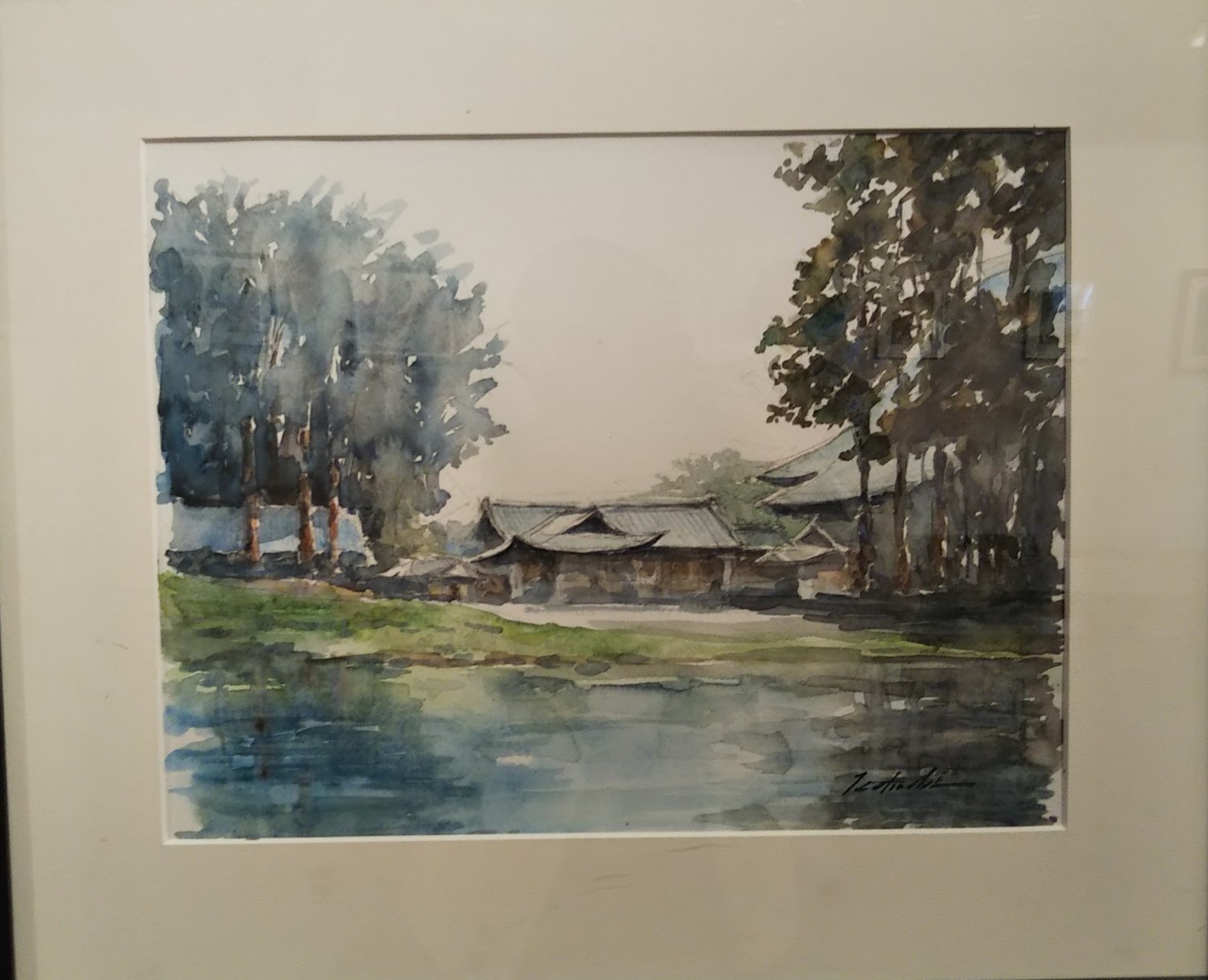
Forty-three landscape paintings drawn by nine members of Shonan watercolor sketch club were exhibited at Citizen Gallery from April 9 (Tue) to the 14 (Sun). Light colored paintings invited visitors into a tranquil world. Many of the pictures showed scenes we are used to seeing, but painters captured momentary beauty we hardly notice in everyday life.
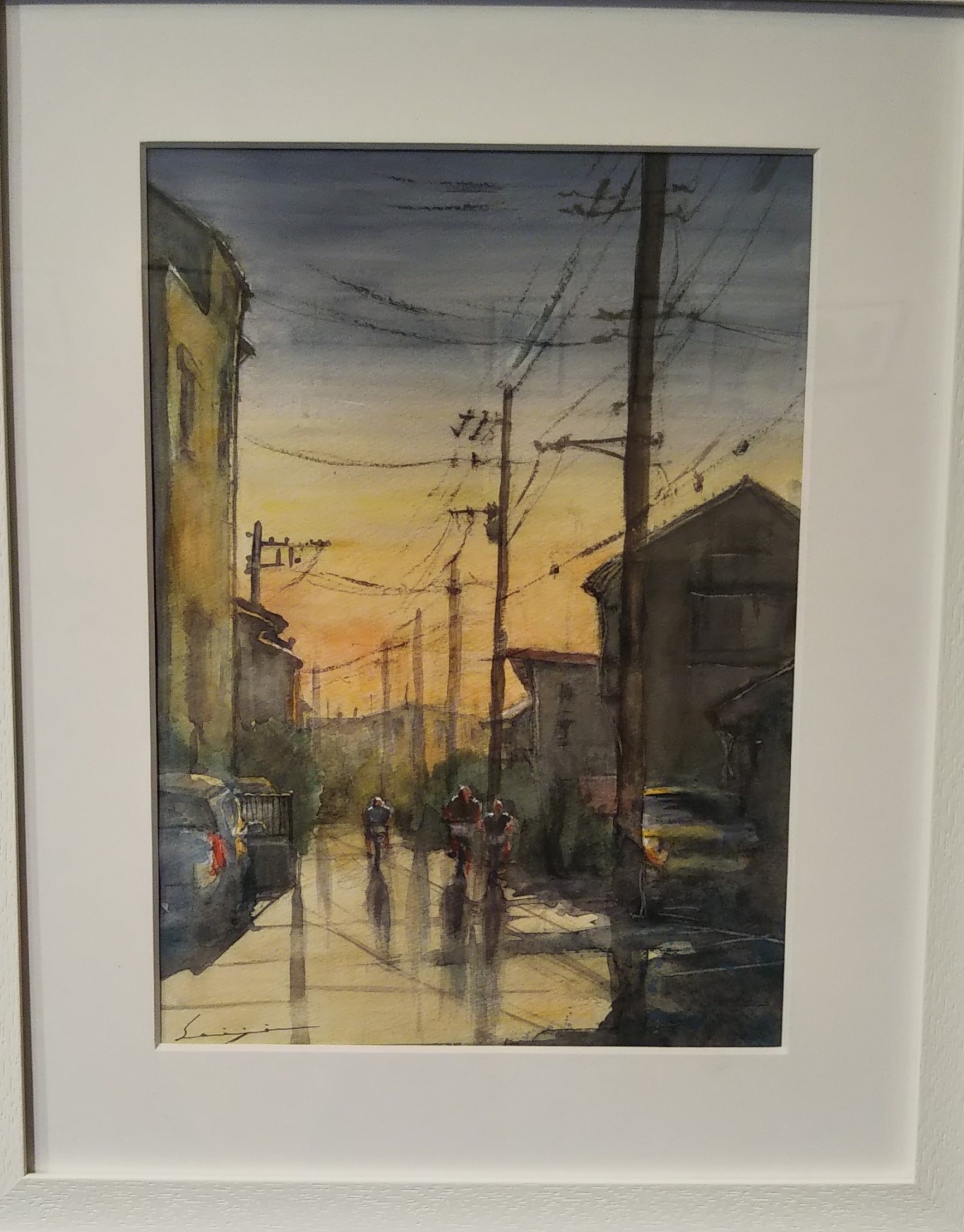
A member said he wanted to draw pictures which were simple with no excessive decoration. His paintings were so clean and clear that the reporter thought his intention had partly been achieved.
The group goes highking for sketching twice a month. New members are welcome regardless of age or gender. If you are interested in the club, please ask Citizen Gallery the leader of the group. No membership fee is required.
Ichi no ichi - Shonan Chigasaki craft fair
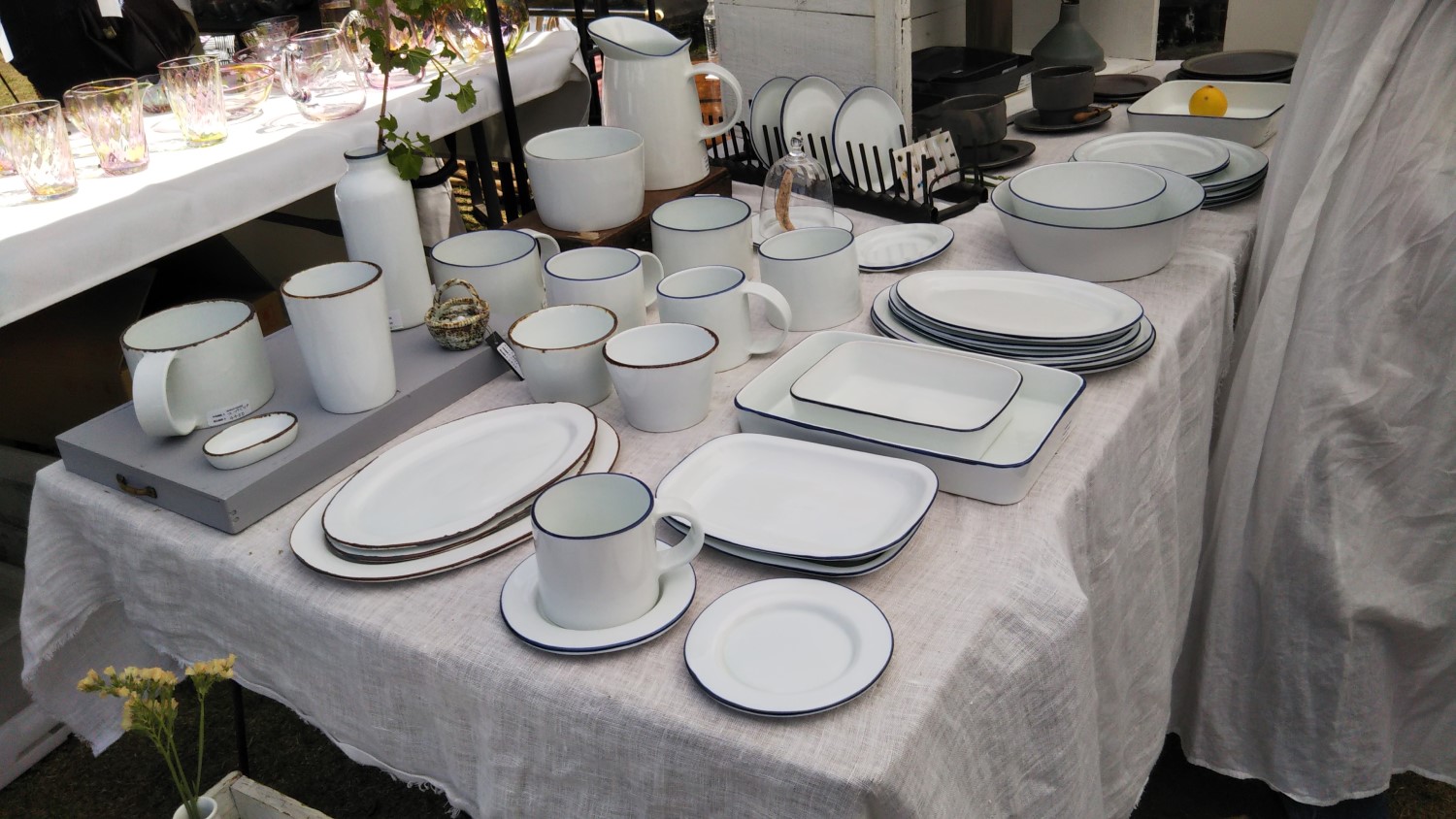
Chuo koen was lively on April 13 (Sat) and 14 (Sun) with several long lines of white tents and visitors flocking around them. Shops of woodwork, pottery, accessories, glass crafts, foods, leather goods, clothes and many more handmade goods, 135 shops altogether, participated in the 2nd Shonan Chigasaki craft fair. Ichi no ich refers to a market which used to take place on the first day of every month. Some shops had space where visitors could make items themselves. Many exhibits looked better in design, color and quality than similar mass-produced items, though prices were probably higher than them. Visitors would have an opportunity to find items which were not commercially available. Blessed with fine weather, people from teens to the elderly took a delight in looking around shops.
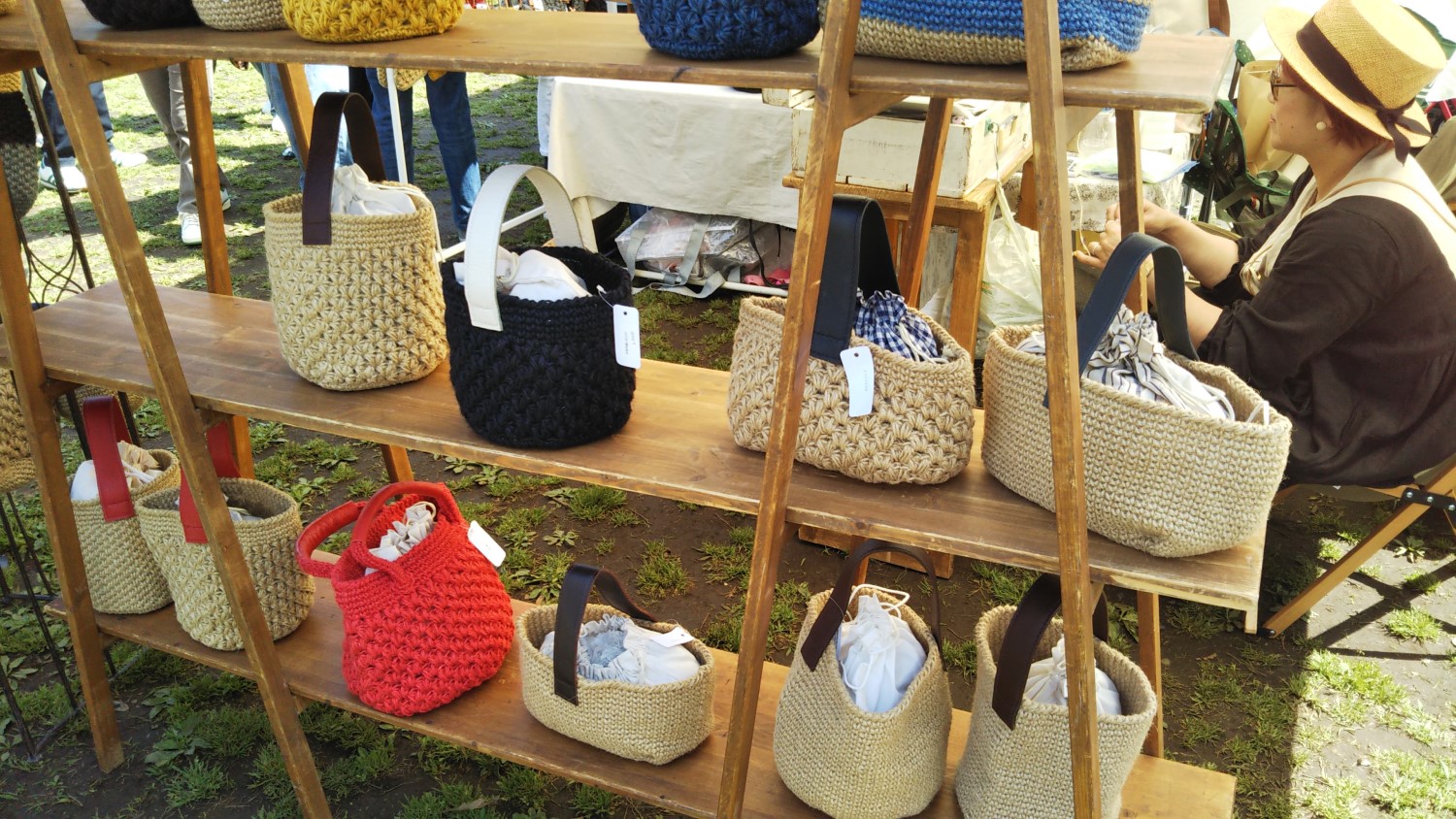
The 69th Oka Echizen Festival
(1) Jyokenji Temple Jimoto Matsuri
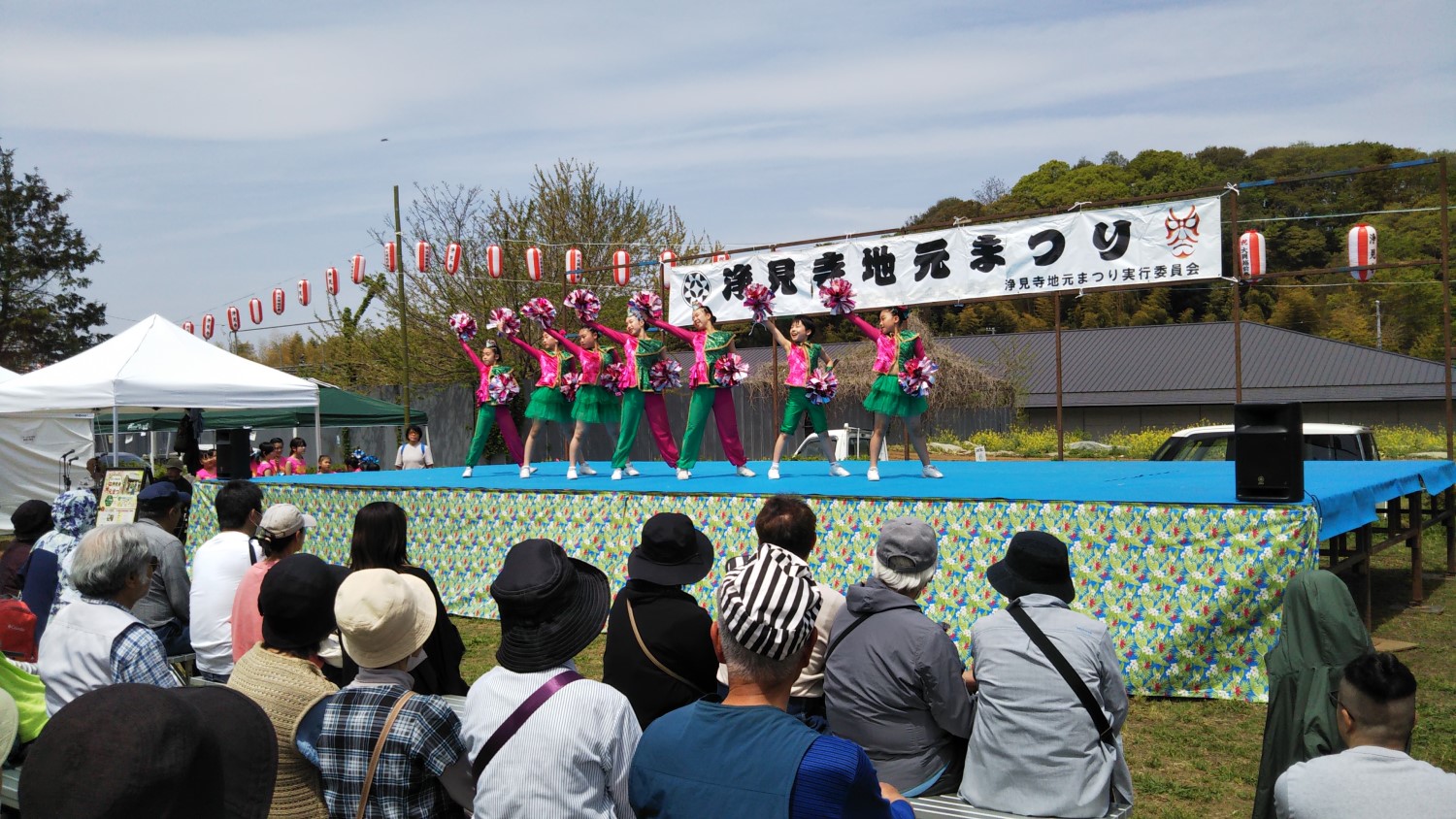
Jimoto Matsuri, which was one of the first events of Oka Echizen Festival, took place on April 20 (Sat) from 10:00 to around 14:30. On the stage set up in the square next to the former Wada Family’s house, local groups performed Japanese drum music, Tsugaru shamisen music and wind instrument music, did aerobics, and danced the hula. In addition, two comic duos of entertainment production Yoshimoto Kogyo performed comic dialogues, and made the audience laugh. Performers ranged from nursery school children to middle-aged and elderly women so that spectators of various generations also enjoyed stage performances.
A few light trucks selling fresh vegetables attracted homemakers. The festival was small but crowded, and local residents seemed to play their roles in carrying out the event positively.
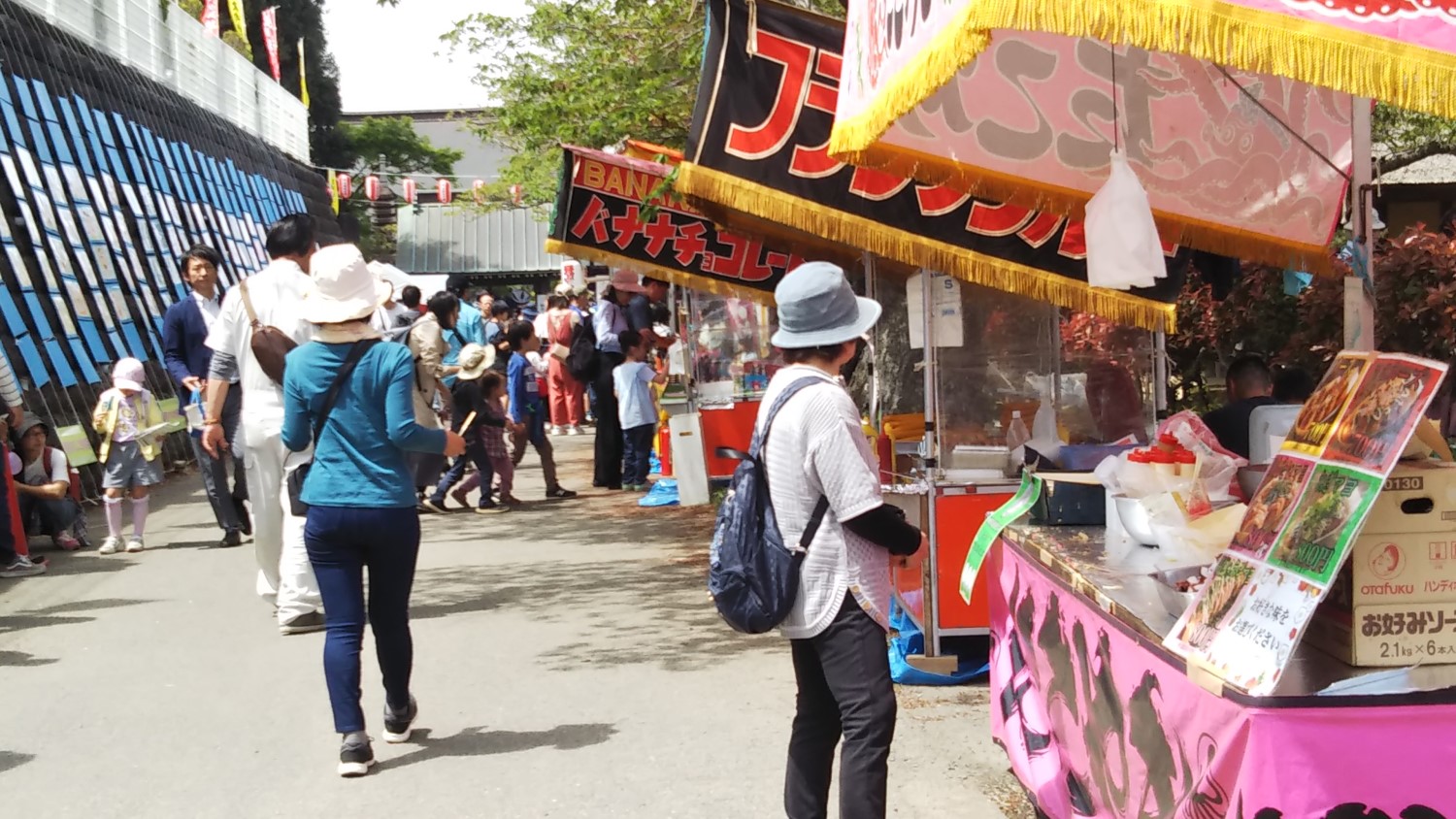
(2) Mikoshi procession
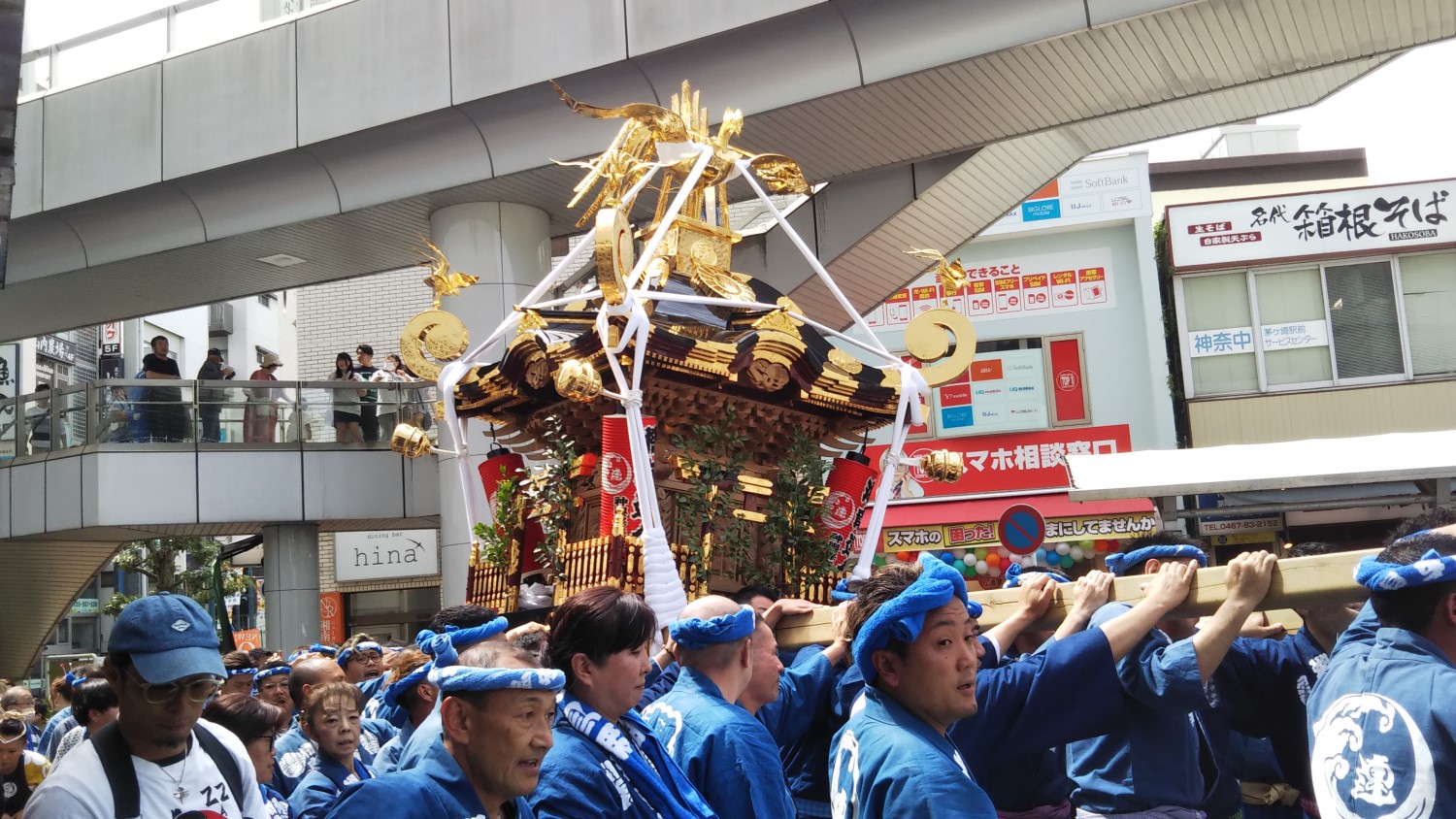
A mikoshi troupe consisting of hundreds of men and women and three mikoshi left Itsukushima Shrine, near Twin Wave, for the northern entrance of Chigasaki Station at 12:30 on April 21 (Sun). Passing under the pedestrian deck, the troupe went on the street between Yokado and Yamadadenki before arriving at the goal near the western end of Emeroad at around 15:00.
This year, the number of mikoshi was smaller than usual. However, the shouts of mikoshi carriers and sounds they made by drumming metal parts fitted to mikoshi created a festive mood at once. Mikoshi is indispensable for Japanese festivals.
(3) Big Parade
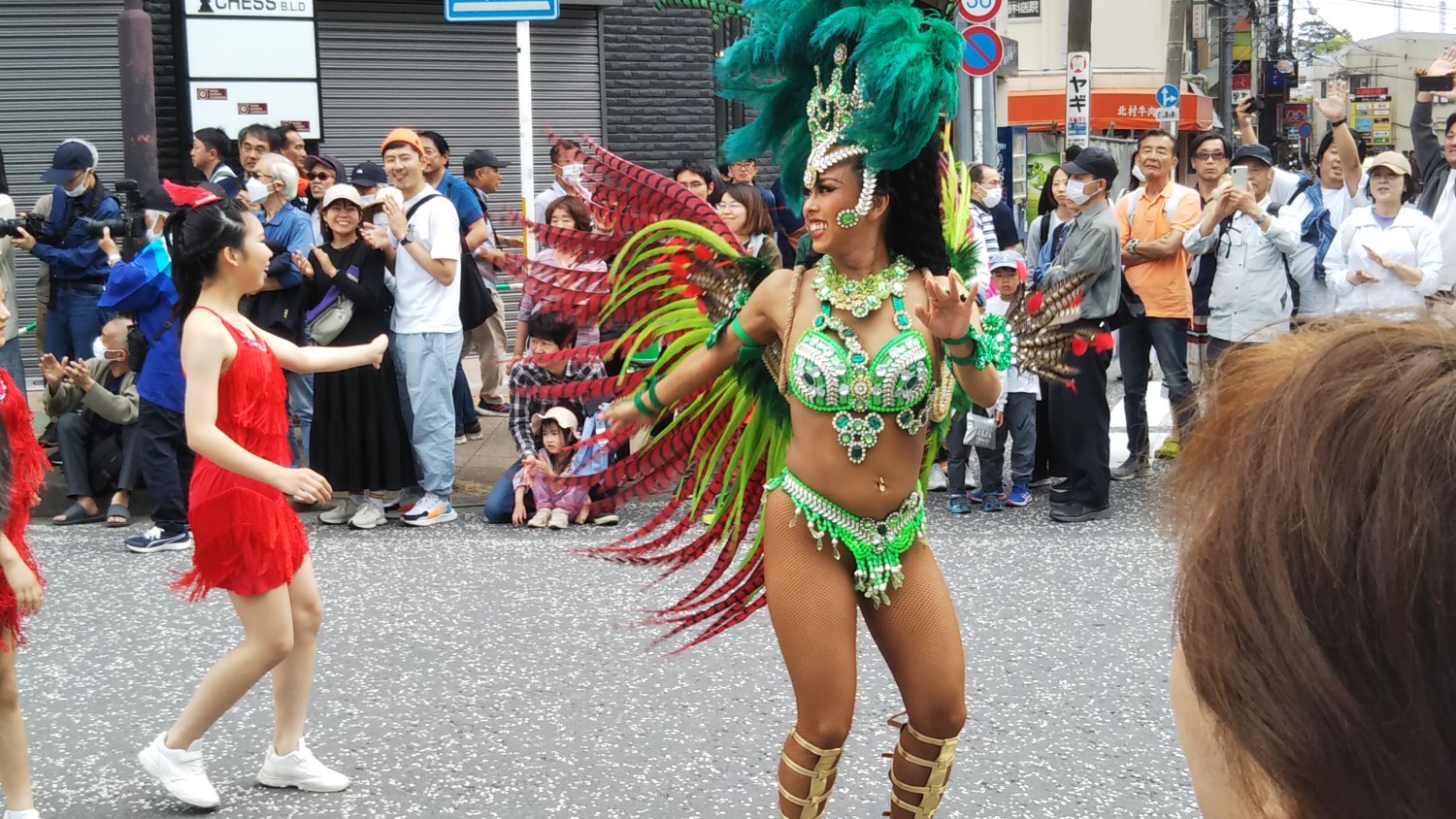
Big Parade started at Chigasaki Elementary School at around 13:00, and reached the square in front of the station’s northern entrance around 14:00, and then went on the same course with the mikoshi procession.
As usual, high school marching bands in neighboring cities, unicycle groups of elementary and JH school students, and a samba dance group received a lot of applause from the crowd. A slow dance by masked men and women of Enzo festival music group, and daimyo’s procession showed that the parade displays not only modern but old days’ culture.
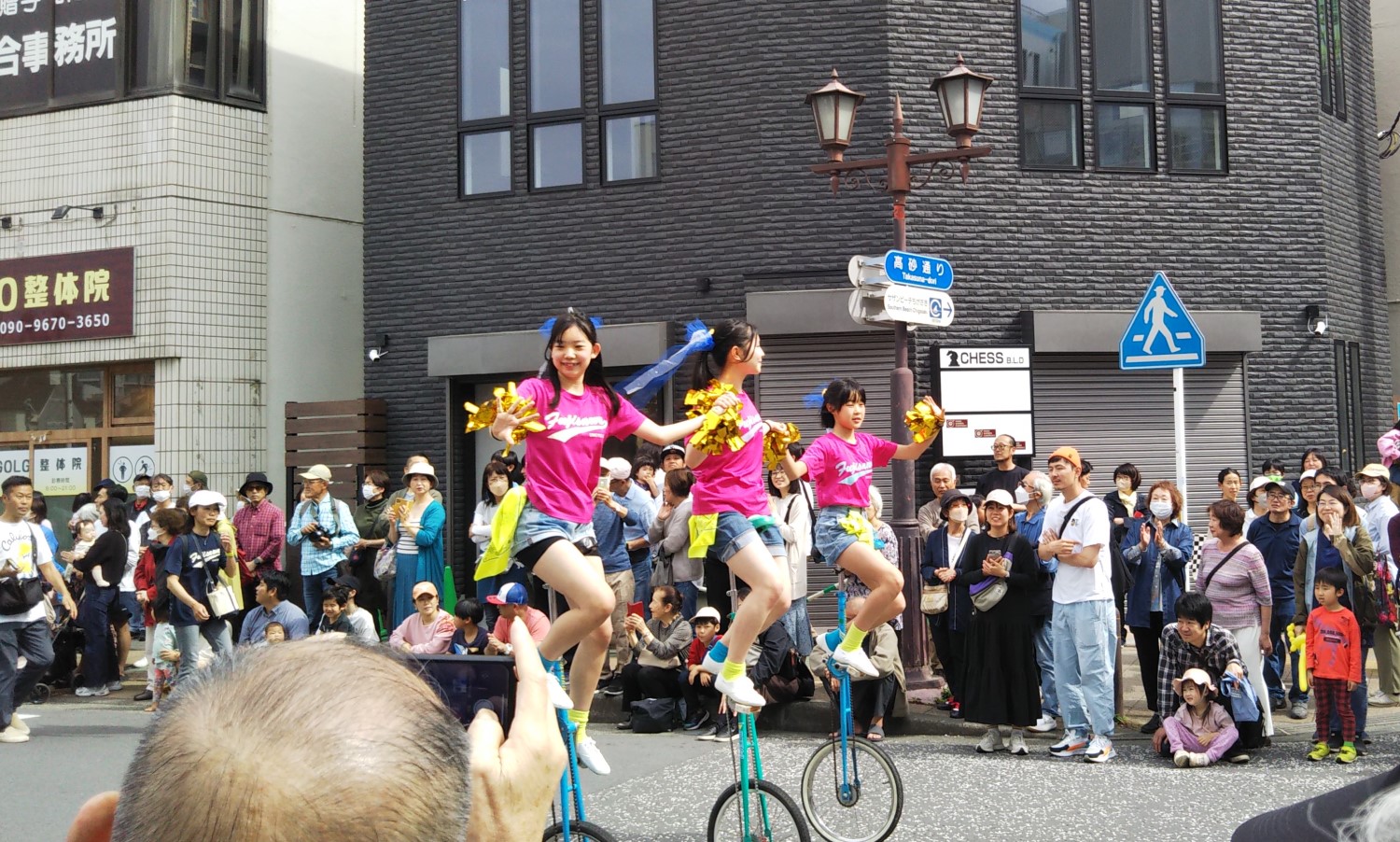
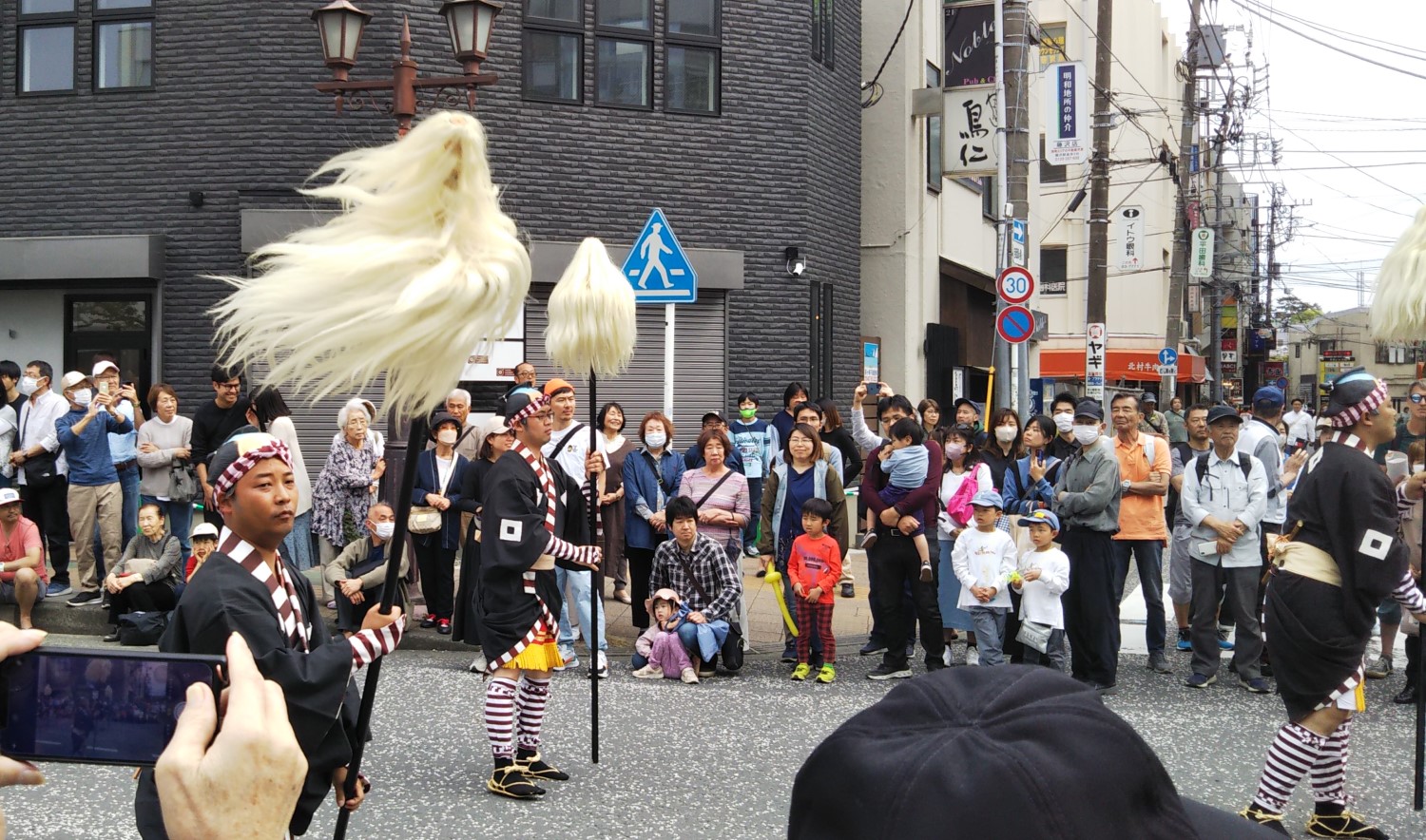
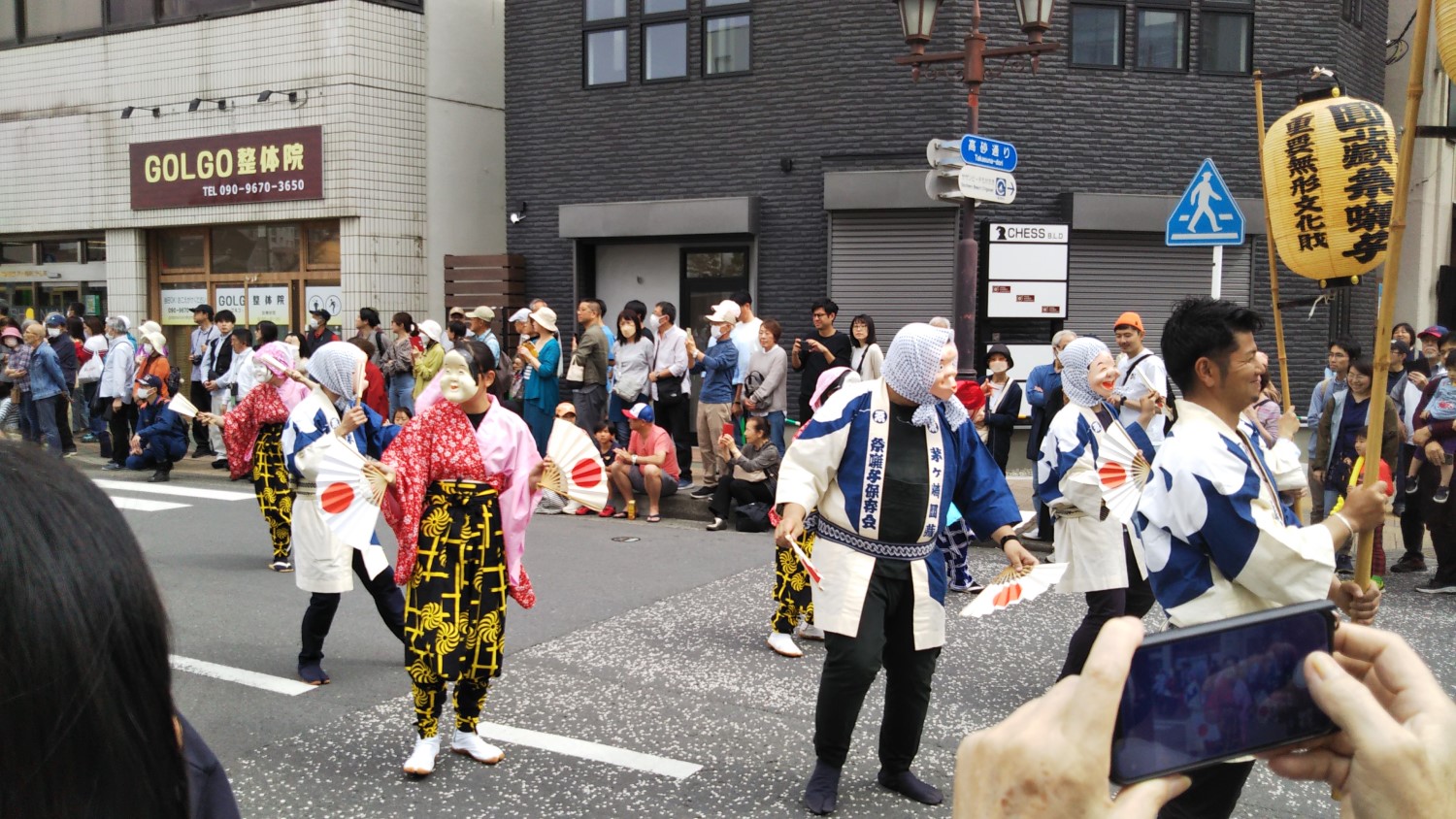
As for other events, Chigasaki Industrial Fair 2024 was held at Chuo Koen on April 20 (Sat) and the 21st (Sun), and the Exhibition of Echizen remnants was held at the Civic Hall on the same days.
Events in May
Citizen Gallery on the 4th floor of N’EST-CE PAS Chigasaki (admission free)
Citizen Gallery on the 4th floor of N’EST-CE PAS Chigasaki (admission free)
●Painting exhibition by Koide monochrome drawing club: April 17 (Wed) 13:00~17:00, from the 18th (Thu) to 20th (Sat) 10:00~17:00, the 21st (Sun) 10:00~15:00
●The 48th anniversary photo exhibition by Photo group Eboshi: April 24 (Wed) 13:00~17:00, from the 25th (Thu) to the 27th (Sat) 10:00~17:00, the 28th (Sun) 10:00~16:00
●Ichibi calligraphy exhibition by Ichibi calligraphy association: May 3 (Fri) to the 5th (Sun) 10:00~18:00, the 6th (Mon) 10:00~16:00
●Photo exhibition by Tetsuo Hara: May 9 (Thu) to the 11th (Sat) 10:00~17:00
●Painting exhibition by Chigasaki Tomon Kai: May 15 (Wed) to the 18th (Sat) 9:50~17:00, the 19th (Sun) 9:50~16:00
●The 35th painting exhibition by Group Sai: May 21 (Tue) 13:00~17:00, the 22nd (Wed) to 25th (Sat) 10:00~ 17:00, the 26th (Sun) 10:00~16:00
Civic Hall exhibition room (admission free)
Civic Hall exhibition room (admission free)
●Painting exhibition by Chigasaki citizen art circle: April 23 (Tue) 13:00~17:00, the 24th (Wed) to 27th (Sat) 10:00~17:00, the 28th (Sun) 10:00~16:00
●Water color painting exhibition by Ayako Furukawa: April 29 (Mon) 13:00~17:00, the 30th (Tue) 10:00~17:00, May 1 (Wed) 10:00~15:00
●The 23rd Gyokusen India ink painting exhibition by Gyokusen India ink painting group: May 8 (Wed) 13:00~17:00, the 9th (Thu) and 10th (Fri) 10:00~17:00, the 11th (Sat) 10:00~16:00
Chigasaki City Museum of Art
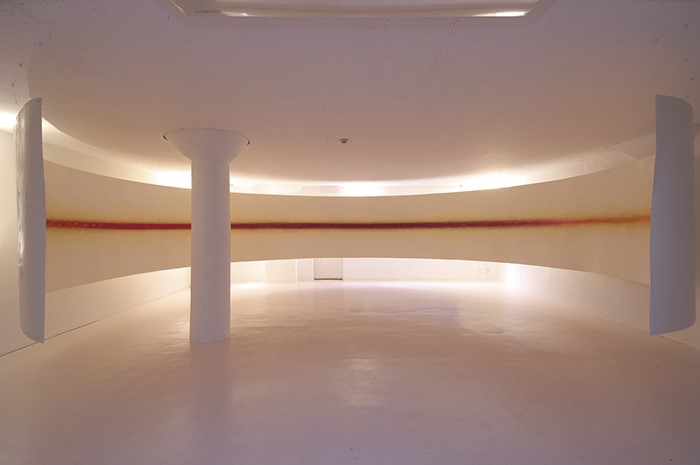
Painting exhibition entitled Exploring Color and Space by Shingo Fransis is now underway. He creates noble and quiet space in his paintings by delicately combining and adjusting colors. His works look differently as viewers look at them from different angles. About 100 modern art paintings which he has drawn since the 1980s are going to be on display until June 9 (Sun). In addition, for the exhibition, Fransis has also painted about 10 new drawings which are designed to utilize the sun light from the windows.
Entrance fee (yen): Adult 800, Uni. student 600, Citizen of 65 and older 400, High school student and younger as well as handicapped person and his or her caregiver free
Chigasaki People’s Museum
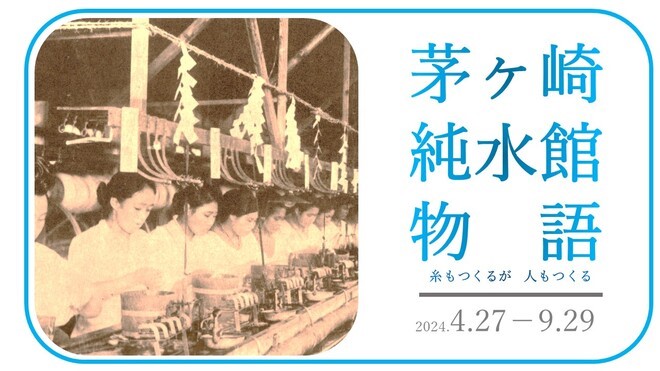
An exhibition, A story of Chigasaki Junsuikan, is now underway at Chigasaki People’s Museum. There was a large plant manufacturing raw silk of excellent quality to the north of Chigasaki Station about a century ago. The exhibition introduces plant manager Fusamochi Koyama and people around him. They said Koyama not only made raw silk but also educated his employees. The exhibition will be held until September 29 (Fri).
Entrance fee: 200 yen, high school student and younger free
Many events are planned at the museum and Umikaze Terrace between May 11 (Sat) and September 7 (Sat).